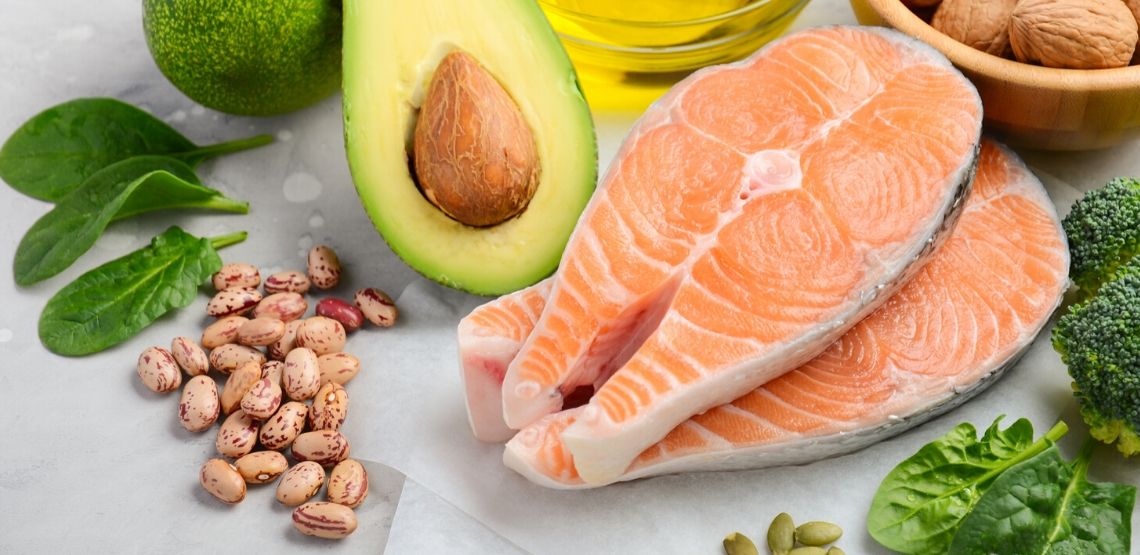Healthy Diet for Diabetics
There are various types of diabetes. However, to explain diabetes very simply, diabetes occurs when blood glucose (or blood "sugar") becomes too high. The blood sugar is our main source of energy. Typically, our pancreas creates and excretes the correct amount of insulin so that the body can use the blood glucose for energy; insulin assists in carrying the glucose into the cells.
Diabetes occurs when there is a complete absence of insulin (type 1 diabetes) or the body is unable to use the insulin that is produced effectively (type 2 diabetes).
Those with type 1 diabetes will always require exogenous insulin; this means that insulin will need to be provided with injections or an insulin pump so that blood sugar can be used as energy.
Those with type 2 diabetes may be able to treat their diabetes with oral medications or insulin.
Regardless, people with both types of diabetes will benefit from a healthy diet. Those with type 1 diabetes may be able to reduce the insulin that is required and stave off complications, and those with type 2 diabetes may be able to reduce glucose levels overall as well as stave off complications.
So, What Is a Healthy Diet for Diabetics?
The problem with the term healthy diet is that there is no one-sized-fits-all approach. The American Diabetes Association publishes Standards of Medical Care yearly, and the Standards of Medical Care - 2020 states, "evidence suggests that there is not an ideal percentage of calories from carbohydrate, protein, and fat for people with diabetes. Therefore, macronutrient distribution should be based on an individualized assessment of current eating patterns, preferences, and metabolic goals."
Basically – person A may exercise 5 times per week and have an A1c of 7.6% and have a recommendation of eating 6 carb choices per meal. Person B may be sedentary with an A1c of 11% and have a recommendation of eating 3 carb choices per meal. Goals must be individualized to the patient based on many different factors.
The ADA suggests that a healthy diet for diabetics should:
- Emphasize non-starchy vegetables
- Minimize added sugars and refined carbohydrates
- Choose whole foods over processed foods whenever possible
The Role of Carbohydrates
Carbohydrates have, perhaps, the biggest impact on blood sugar values. As such, they have a bad reputation among the diabetes community.
Carbohydrates include foods such as fruits, milks and starches. This includes starchy vegetables, like peas, corn and potatoes, breads, pastas and rice, and desserts like cakes and donuts.
Related Search Topics (Ads)
Vegetables, such as broccoli, cauliflower and tomatoes, also have carbohydrates. However, their carbohydrate content is minimal.
In the diabetes community, we often consider one serving of a food a "carb choice".
A "carb choice" equals 15 grams of carbohydrate. Examples of serving sizes that are one carb choice include:
- Milk, 1 cup
- Juice, ½ cup
- Small banana, ½
- Syrup, 1 tbsp
- Unflavored yogurt, 1 cup
- Slice of bread, 1 slice
- Sugar-free syrup, 2 tbsp
If prescribed a certain amount of carb choices, you’ll tally how many carb choices you consume and spread them throughout the day. Ideally, you’ll eat them equally between your meals and snacks, as this can help to keep your blood sugar level stable.
There is no perfect amount of carb choices for someone with diabetes — it must be individualized to fit each person’s needs.
Many people believe they need to count sugar — sugar is a component of the carbohydrate content. Foods that are high in sugar will likely be more concentrated in carbohydrates. In addition, you’ll likely consume a smaller volume, so you’ll feel the need to eat more food to feel full.
The Role of Protein
If there is no kidney disease present, there is no reason to limit protein. There is also no ideal amount of protein intake that will improve glycemic control.
However, according to Diabetes Self-Management, "…several studies have shown that higher protein intakes (28% to 40% of calories) have favorable effects on blood glucose and A1C levels. But different studies have shown otherwise. And some studies have shown improved LDL cholesterol and triglyceride levels with a higher protein intake. But again, other studies did not show improvement."
We do know that protein can help promote satiety. Combined with other macronutrients, it can keep glucose stable.
The Role of Fat
There is also no ideal amount of fat, though the Institute of Medicine suggests between 20% to 35% of calories for the general population.
The American Diabetes Association does recommend the following:
- Limit saturated fats, such as high-fat dairy and high-fat animal protein
- Eliminate trans fats
- Reduce animal cholesterol sources, such as egg yolks, poultry skin and high-fat dairy
- Increase monounsaturated fat, such as nuts, avocadoes, and canola and olive oils
- Consume fish that is rich in omega-3 fatty acids two to three times per week; examples include tuna, salmon, sardines and trout
Article Resources
- American Diabetes Association (Facilitating Behavior Change and Well-Being to Improve Health Outcomes: Standards of Medical Care in Diabetes – 2020)
- American Diabetes Association (Fat)
- Diabetes Self-Management (New Diabetes Nutrition Recommendations: Macronutrients and More)
- EndocrineWeb (Treatment of Diabetes: the Diabetic Diet)
- National Institute of Diabetes and Digestive and Kidney Diseases (What is Diabetes?)


